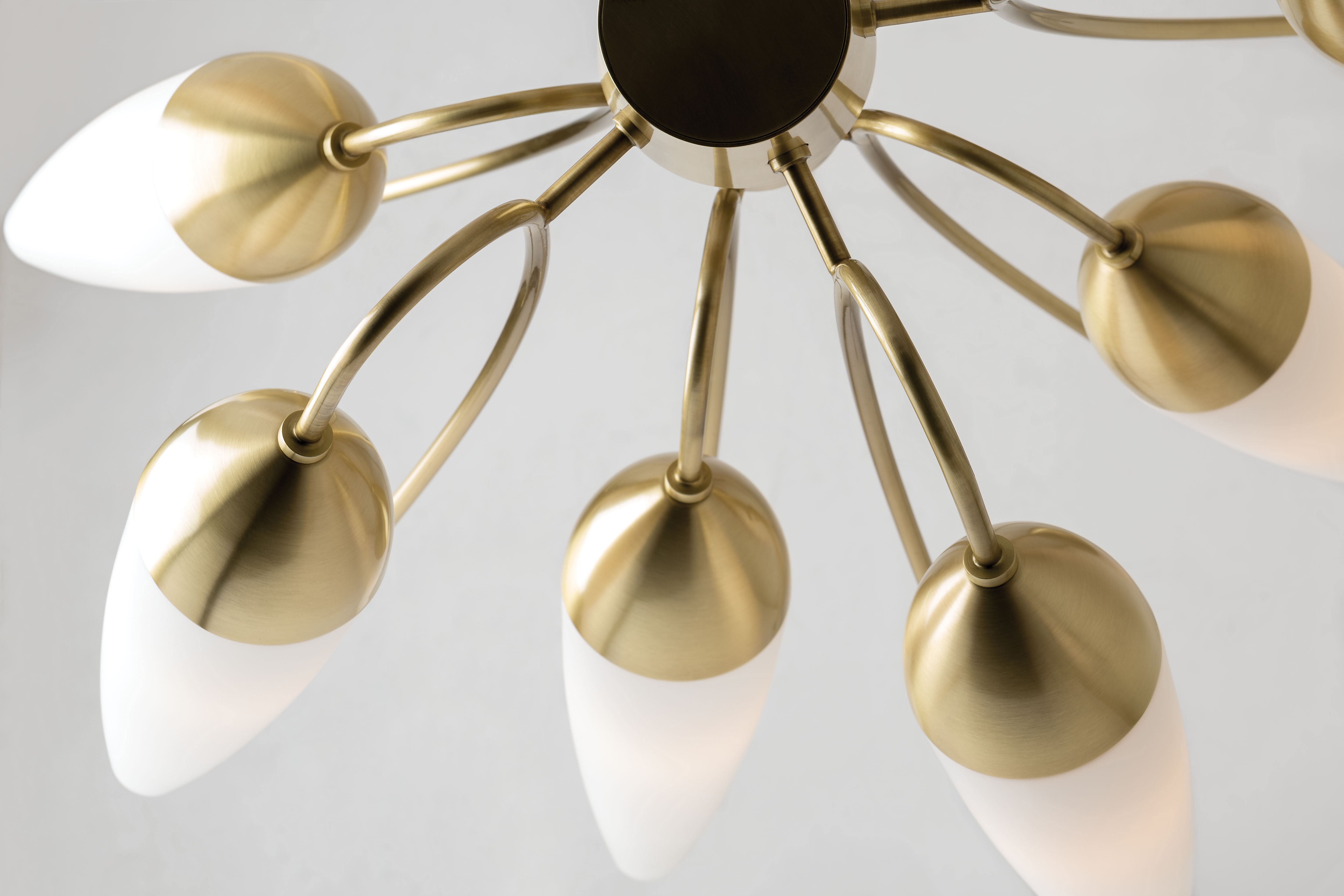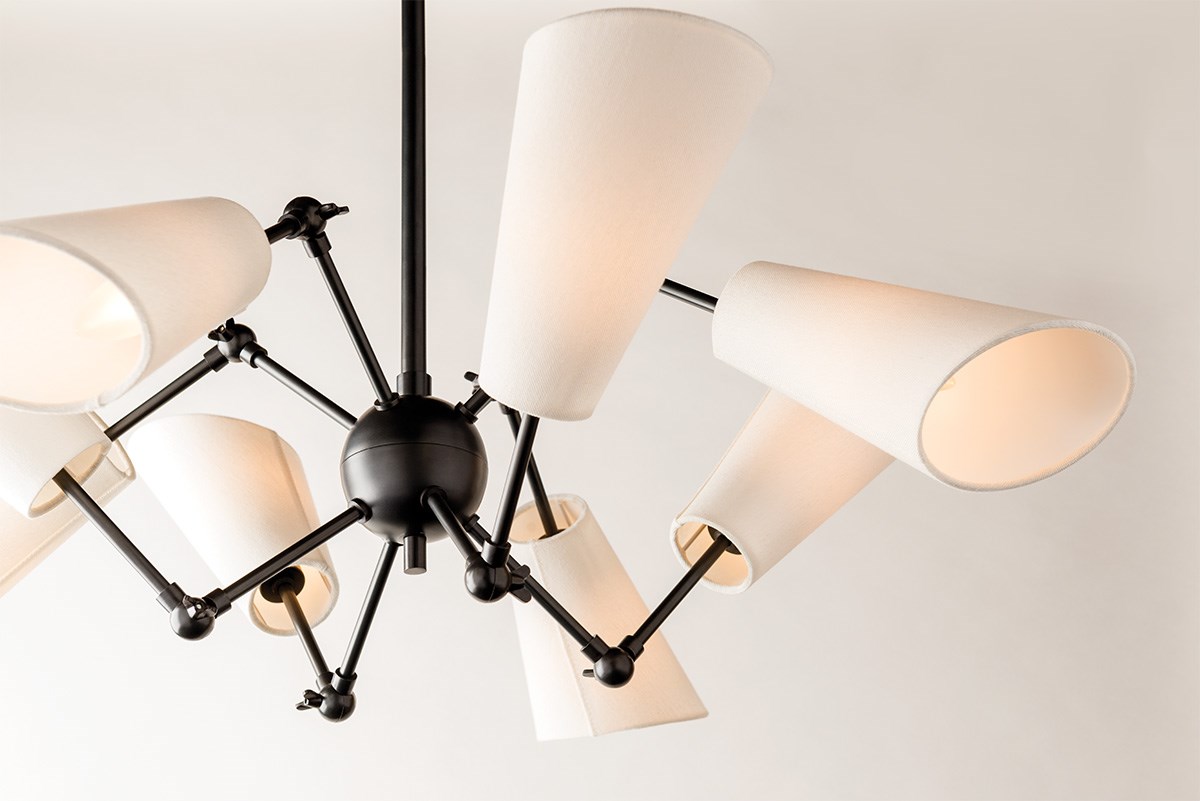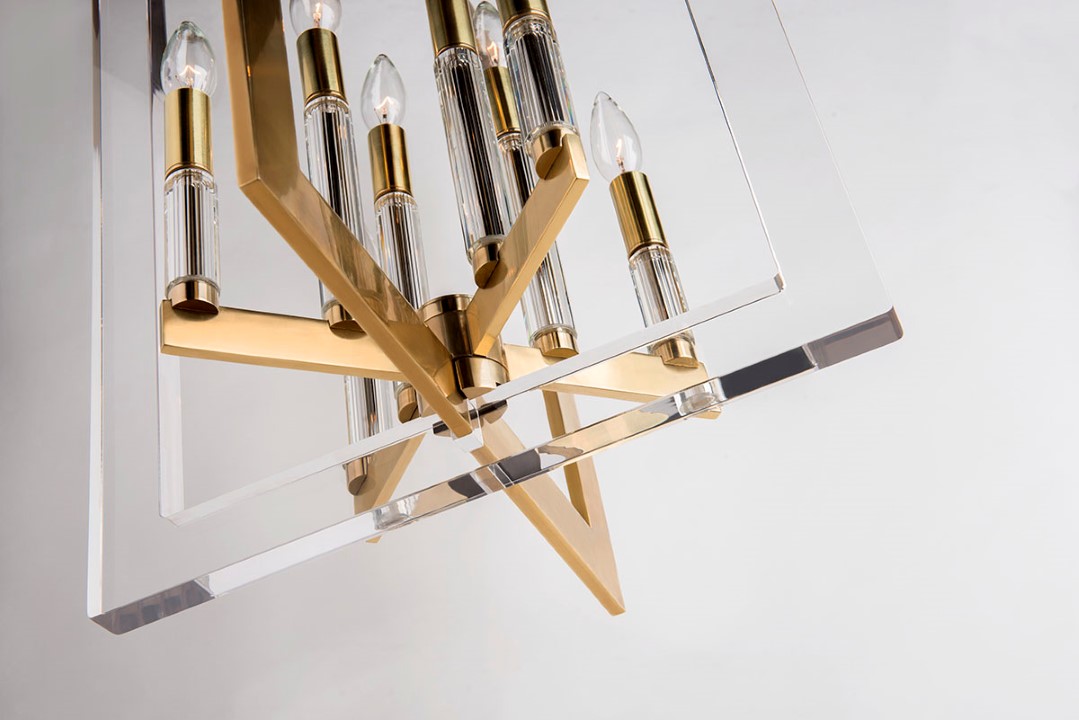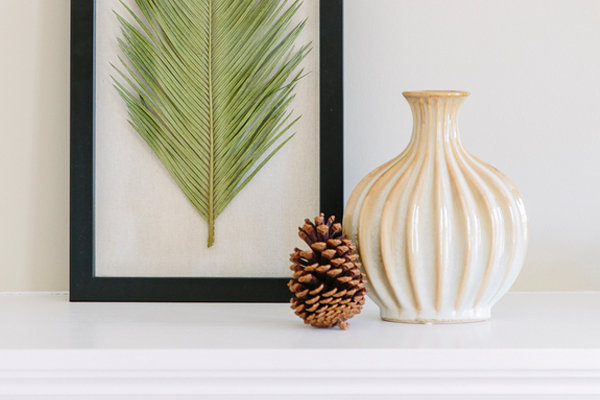Ah, the sun. There's no better feeling than the warmth that cups your face for the first real time. That first real time once spring's rains have tapered and flowers' buds are in full bloom. Within that warmth there's confirmation that yes, summer has finally arrived and the next few months will be stuffed with cat naps, barbeques, (which will leave you stuffed, too) and weekend getaways to your favorite beach or lake destination.
To welcome this incandescent time, celebration of summer solstice (at least in the Northern Hemisphere) falls on June 21st, the longest day of the calendar year. Technically, this is a cosmological event, but its cultural significance goes beyond measuring the length of daylight. The sun has been a muse for many—including furniture and home décor designers.
Have you noticed a mirror that keeps appearing while you're pinning away? The sunburst motif continues to shine through centuries of design, most commonly in stylized shapes of mirrors, hanging in living rooms and entryways.
Lindsey Coral Harper Interior Design
The sun is a versatile design — cabinet doors, wall art, and jewerly all enjoy the largest star's motif. But where did this influence begin? One of the earliest depictions is the famous Jan Van Eyck oil painting, "The Arnolfini Portrait," from 1434. A zoomed in capture of the painting shows off a very-sunburst shaped mirror.

The sunburst motif really took off a few hundred years later with King Louis XIV of France, who loved the sun so much, he was called the Sun King. Before King Louis was king, he was a performer who enjoyed dancing and acting in different court performances. In his Ballet de Nuit, Louis had to play the role of Sun (the god Apollo,) leading to his realization of Apollo’s purpose and the bounty of the role.
.jpg)
Following this performance, he chose the sun as his emblem. During his reign in France, pieces of furniture and architectural features were decorated with a sun motif. This idea was especially integrated into the Palace of Versailles, which Louis proudly turned into the grandiose palace we know today. The 17th century Gate of Honour, one of the most important features of Versailles, is a wrought-iron gate with gold leaf, fleur-de-lis, crowns, and cornucopias. Integrated into the mix is the Apollo sun mask—Louis’s emblem. Once solely for the sake of design, the gate has become a memorial for the king and his visions.
So how did the sunburst motif hold up post-Louis XIV? Design historian John Pile in his reference, A History of Interior Design, says that the early 19th century was witness to the first resurgence in popularity for the sunburst motif, specifically the small, rounded mirrors used centuries prior. Its resurgence worked in tandem with the full take-off of mirror production at the time, becoming a popular decorative and functional accessory in both European and American homes.

A 19th century French sunburst mirror, via 1stdibs.com
A 19th century Spanish Colonial sunburst mirror, via 1stdibs.com
Design blogs have noted a resurgence again in the late 20th century. While the sun design progressed with the times, its shape remained celestial and vibrant. Notice this 20th-century sunburst mirror from Spain, as it is more oval than those commonly seen in its genre but embodies the energy of the sun — a very intriguing find.
A 20th century sunburst mirror, via 1stdibs.com
There’s a commonality with each century here — the sunburst shape keeps appearing. As the 21st century ventured on, we as lighting designers realized that we could take this reappearing motif and make it our own, modernizing it, bringing sun and light together. Our Blink family’s pendant and sconce are perfect examples of this. There is an obvious resemblance to a sunburst mirror as both fixtures exude the power of the sun with charm in their elongated stems and cottage brass finish.
Lighting fixtures aside, nothing will ever be as virtuous, energy-efficient, or as good at lighting as the solar system’s power source. Summer solstice is a day marked by several different traditions expressing praise and gratitude for the life the sun provides, dating back to ancient rituals. Summer solstice (also referred to as midsummer’s eve, June solstice, or St. John’s Day) has a time-honored history. Originally, the date of summer solstice was used as a calendar marker to figure out when to harvest and plant crops. Some historians even reference Stonehenge as proof that ancient people used summer solstice to organize these calendars. Pretty neat!
The celebration of midsummer’s eve continues from ancient times and is a festival for new beginnings. Traditionally during midsummer celebration, bonfires were lit to protect against evil spirits which were believed to roam as the sun turned southward again. In present times, midsummer’s eve is considered the greatest festival of the year in countries like Sweden, Finland, and Romania, with exciting celebrations that include folk dances in traditional costumes and other large community events. So much sun love!

Midsummer's eve (summer solstice) in Sweden, image via sweden.se

Midsummer in Romania, image via readtiger.com
So back in our part of the world, what does summer solstice mean to us? It is indeed the longest day of the year and may just be a status posted on Facebook or a hashtag for a picture on a sunset, but maybe we can attempt to appreciate the star behind the holiday (pun intended there) in a more grandiose fashion. Perhaps you will sit outside a little longer or attend an outdoor event with friends and family. Perhaps you will express quiet gratitude for the sun’s daily gift of light at some point during the day. Or perhaps, you will simply close your eyes and feel the sun’s warmth on your face, welcoming you fully into the season.
Regardless if you celebrate or not, the sunburst motif is celebrated in design all-year-round. And for those left hesitant or unsure, do as King Louis XIV and put a sun on it (after all, Paris was his Portlandia, was it not?)

















